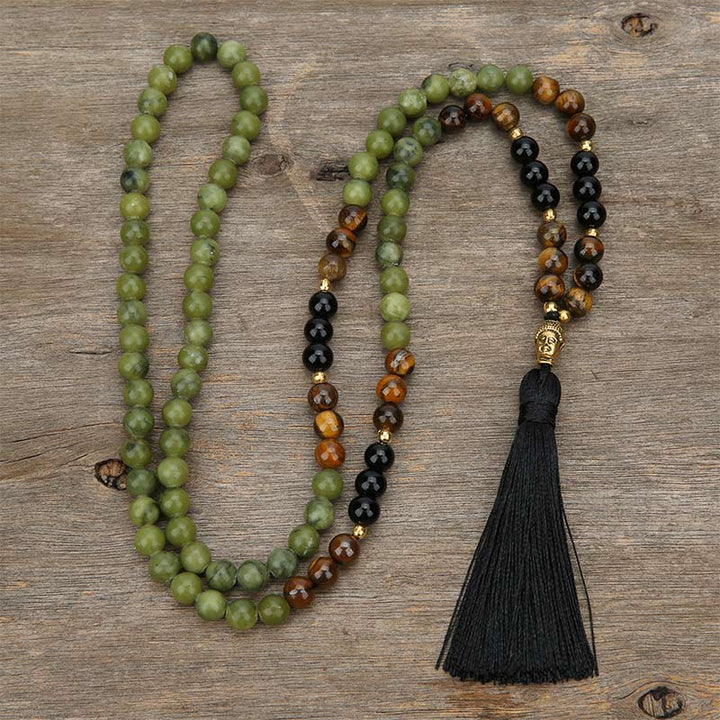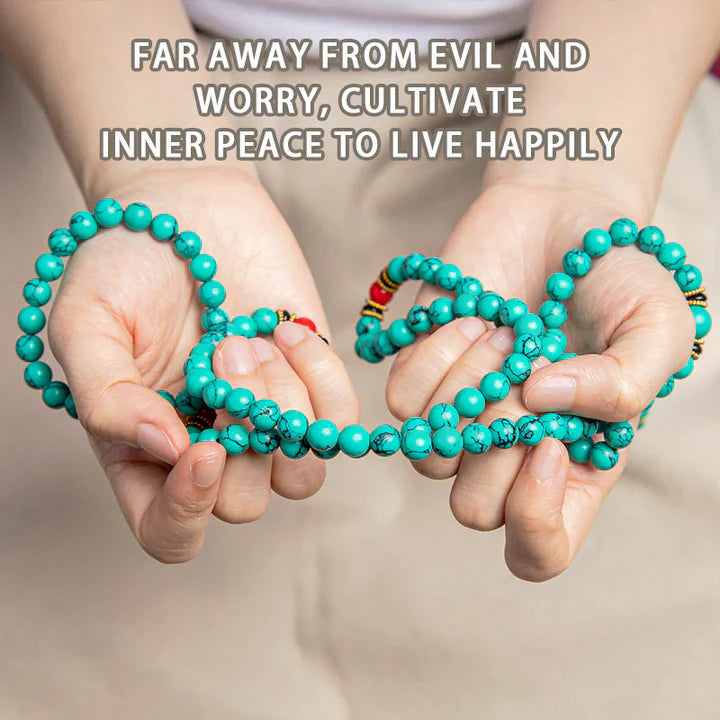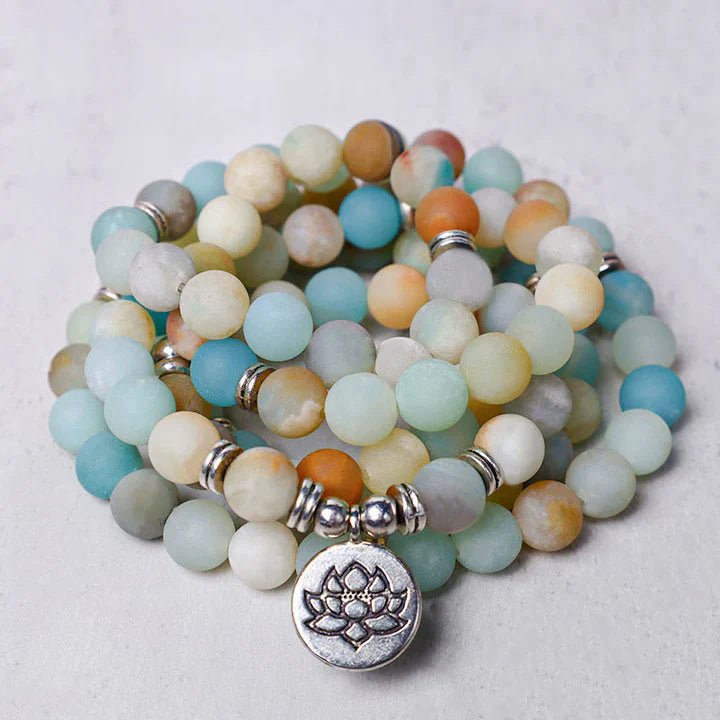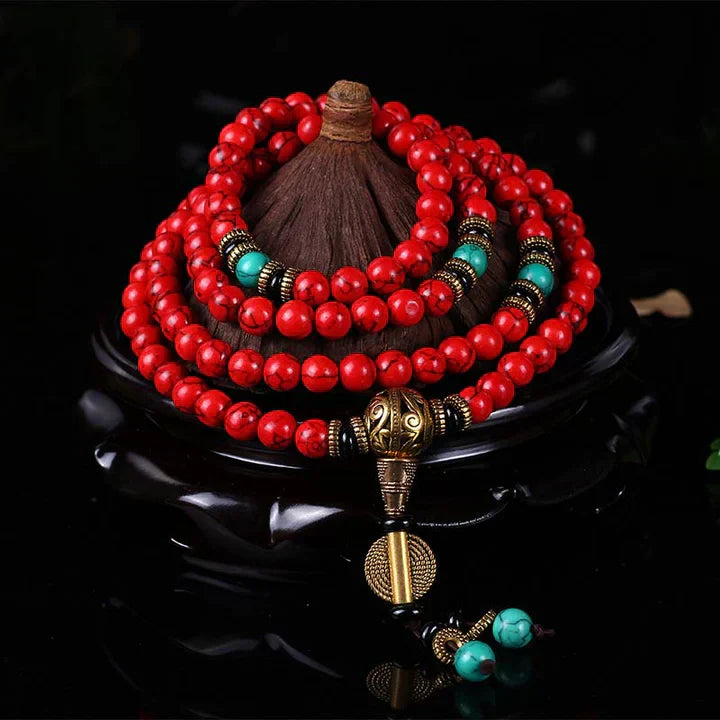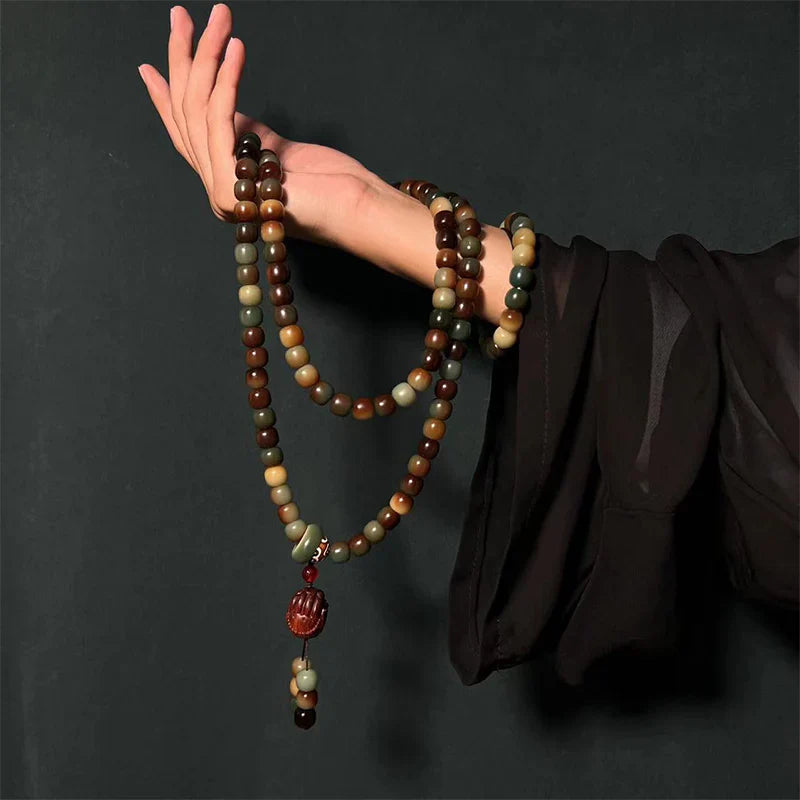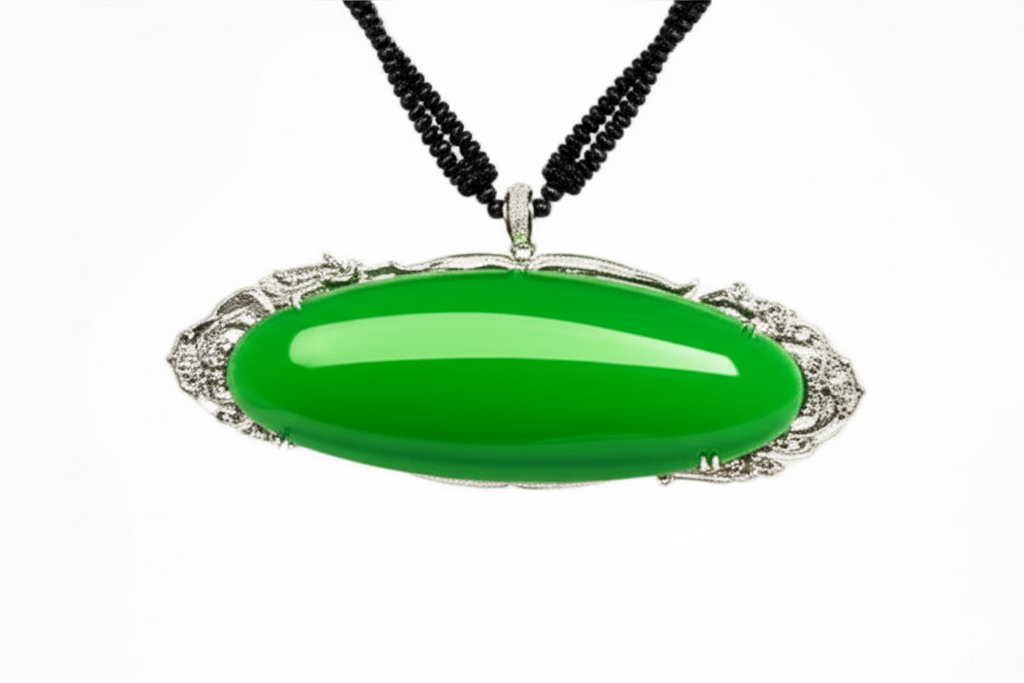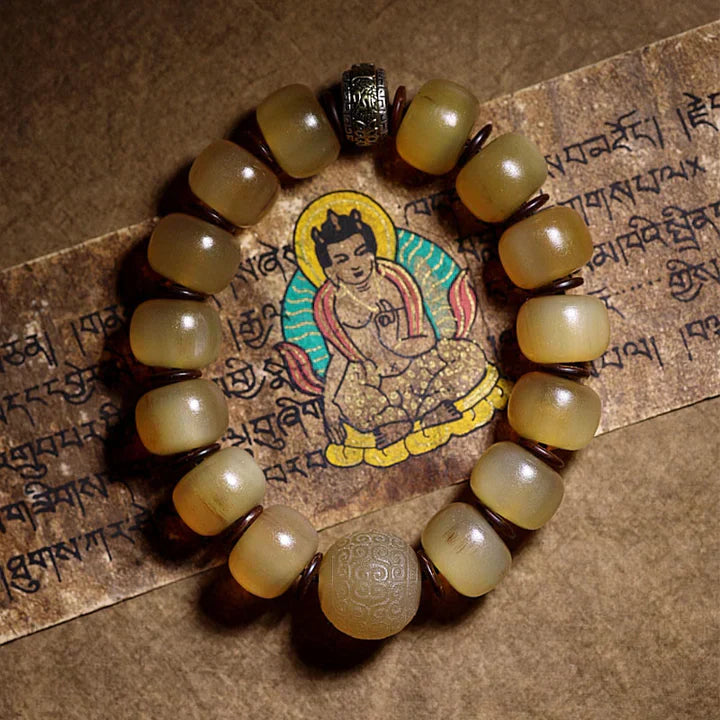
how to pray with a rosary bracelet?
Rosary bracelets, as symbols of faith and spiritual focus, are widely practiced in many religious cultures, including Catholicism, Buddhism, and Islam. They are not only an aid during prayer but also a symbol of reverence for faith and inner peace. Whether for religious believers in their daily practice or as a spiritual refuge for those seeking peace of mind, mastering the correct wearing and use of rosary bracelets, as well as the precautions for prayer, is crucial for engaging with oneself and one's faith.
1. Correctly Wearing Rosary Bracelets: Respecting Tradition and In Accordance with Faith
Wearing a rosary bracelet is more than a purely decorative act; it embodies respect for faith. While the proper wearing practices vary across different religious cultures, they all revolve around the principles of cleanliness and respect.
In terms of placement, most religions recommend wearing the rosary bracelet on the left hand. Buddhism considers the left hand the "clean hand," less exposed to worldly objects and more suitable for holding sacred objects. While Catholicism doesn't strictly distinguish between left and right, the left hand makes it easier for the right hand to hold the rosary during daily prayer. Islam emphasizes the importance of maintaining hand cleanliness when wearing the rosary, and wearing it on the left hand reduces wear and contamination from physical exertion. In special circumstances, such as attending religious ceremonies or important prayer events, some believers adjust their rosary bracelets to the inside of their wrist, close to their heart, as a gesture of devotion.
When wearing the rosary, it's important to ensure it's appropriately tight, allowing for a finger to easily fit. Too tight can impair blood circulation, while too loose can cause it to fall off during activity. Also, avoid layering your rosary bracelet with other accessories (such as watches or metal bracelets). This prevents wear on the beads and prevents the clutter of multiple items from distracting from prayer. Buddhists should also note that rosary bracelets should not be left in cluttered places like pockets or purses. When not worn, they should be placed in a clean cloth bag or box to avoid contamination. Catholics typically store their rosaries with religious relics (such as a cross pendant) to preserve their sanctity.
Furthermore, different religions have specific meanings regarding the number of beads in a rosary bracelet, and it's important to respect these cultural connotations when wearing one. Buddhist rosaries often have 108 beads (symbolizing the elimination of the 108 kinds of afflictions) or 18 beads (representing the 18 Arhats). Catholic rosaries typically have 59 beads (consisting of five groups of decades, a mother bead, and a cross). Islamic rosaries (Tasbih) often have 33 or 99 beads (corresponding to the 99 names of God). When wearing a rosary, it's important to understand the cultural context of your rosary and avoid adding or subtracting beads to avoid violating traditional meanings.

II. How to Use a Rosary Bracelet: Focus on Holding the Beads, Let Your Mind Follow Your Thoughts
The core function of a rosary bracelet is to aid concentration during prayer. Its use should adhere to the principle of "holding the beads in an orderly manner and unifying your thoughts." While the specific procedures vary between religions, they can generally be divided into three stages: "Preparation - Holding the Beads - Closing."
(I) Prayer Preparation: Creating a Clean Physical and Mental Environment
Before praying, you must first adjust your physical and mental state. Physically, you should keep your hands clean. If possible, you can perform a simple hand-washing ritual (such as the Buddhist "Ablution" or the Islamic "Wudoo"). Clothing should be neat and appropriate, avoiding overly revealing or casual clothing to demonstrate your commitment to prayer. Environmentally, choose a quiet, distraction-free space. You can place candles, incense, or religious symbols (such as Buddha statues or crosses) to create a solemn atmosphere. Once ready, gently hold the rosary bracelet in your hands, close your eyes, and focus for a moment, clearing your mind of distractions and allowing your heart to gradually calm, thus mentally preparing for prayer. (II) Rosary Procedure: Count the beads in sequence, synchronize your thoughts and prayers
Different religions have slightly different methods for counting beads, but the core principle is to "count the beads one by one, with one heart and one mouth." For example, in the Catholic Rosary, when praying, one first holds the cross and recites "In the name of the Father, and of the Son, and of the Holy Spirit." Then, grasping the first bead, one recites the Our Father. Then, one rotates each decade of 10 beads, reciting a Hail Mary for each bead. Between each decade, one recites the Glory Bead. After all beads have been counted, one returns to the mother bead and recites the Hail Mary, completing the prayer.
Buddhist prayer beads emphasize "reciting and counting." When holding the beads, gently pinch them between your thumb and index finger (avoid touching with your middle, ring, or pinky fingers, as this is considered disrespectful to the faith). Starting with the first small bead next to the mother bead, silently recite a Buddhist mantra (such as "Namo Amitabha" or "Namo Guanyin Bodhisattva") or a short verse from the sutra with each twist. Once you reach the mother bead, do not skip ahead; instead, turn the beads clockwise and continue with the next set of beads, repeating the cycle. The Islamic Tasbih method of holding the beads is more flexible, typically using the right thumb to twist the beads. Each bead corresponds to a phrase in praise of God (such as "Praise be to Allah" or "There is no god but Allah"). A round of 33 beads can be repeated three times for a total of 99 recitations.
Regardless of the religious method of holding the beads, gentle movements and focused attention are crucial, avoiding rapid twisting or distraction. If you are interrupted during prayer, pause and refocus your breathing and mindfulness before continuing. There's no need to worry about the interruption.
(III) Closing the Prayer: Respectfully Place the Rosary and Maintain Mindfulness
After prayer, do not discard or place the rosary beads randomly. First, hold the beads with both hands, close your eyes, and remain silent for a moment, reflecting on the prayer and calming your mind. Then, gently wrap the rosary bracelet around your wrist or place it in a clean container. Buddhists may conclude by placing their hands together and bowing to a Buddha statue; Catholics may make the Sign of the Cross in front of a cross to express gratitude for their faith. The key to closing prayer is maintaining a respectful heart. Avoid immediately engaging in busy matters after prayer, allowing time for inner transition and continued mindfulness.

III. Precautions for Praying with Rosary Bracelets: Reverence and Moderation
As an artifact connecting faith and the soul, the precautions for using a rosary bracelet are essentially the practice of "respect." Religious taboos, daily care, and mental adjustment are crucial.
(1) Observe religious taboos and avoid offending traditions
Different religions have specific taboos regarding rosary bracelets, which must be strictly observed as a sign of respect. Buddhism prohibits the use of rosary bracelets for purposes other than prayer (such as toys or horse whips). Non-believers are advised not to touch or wear rosary bracelets, especially to avoid contamination with blood, sewage, or other contaminants. If a rosary bead breaks, it should be considered "cause of fate" and should not be discarded. The beads can be collected and re-strung, or taken to a temple for blessing and proper disposal.
Catholicism stipulates that rosary bracelets should not be used for superstitious activities (such as divination, praying for blessings and warding off disasters), and should not be worn in unclean places such as toilets and bathrooms. If a rosary is damaged, it should be burned or buried in clean soil along with religious waste (such as torn Bible pages), and should not be discarded with ordinary garbage. Islam requires that rosaries be kept clean and should not be worn while chanting obscenities or eating pork. While women can pray with beads during menstruation, they should avoid touching the beads and then directly touching religious texts.
(II) Maintaining Daily Care and Keeping the Item Clean
Maintaining a rosary bracelet is not only about cherishing the item, but also about respecting your faith. Regarding materials, wooden prayer beads (such as red sandalwood and agarwood) should be protected from moisture and direct sunlight to prevent cracking and warping. Regularly wipe with a clean cotton cloth to maintain the wood's luster. Gemstone prayer beads, such as jade and agate, should be protected from impact to prevent scratches or chipping. Metal prayer beads (such as silver and copper) should be protected from sweat and chemicals (such as perfume and detergent) to prevent oxidation and darkening.
When cleaning prayer beads, choose the appropriate method based on the material: Wooden and bodhi prayer beads can be wiped with a dry cloth. Minor stains can be gently rinsed with warm water and then air-dried. Gemstone and metal prayer beads can be cleaned with a soft brush dipped in a neutral detergent, then rinsed with clean water and wiped dry. When storing prayer beads, keep them away from areas with heavy smoke and dust, and avoid storing them with sharp objects to ensure they remain clean and intact.
(3) Adjust your prayer attitude and avoid formality
The core value of a prayer bracelet lies in promoting focus, not in the ritual itself. When praying, avoid chanting beads simply to complete a task. If distracting thoughts arise, slow down your chanting and practice deep breathing (inhale while turning the beads, exhale while chanting), allowing your thoughts to gradually sync with your movements. Furthermore, avoid viewing the rosary as a tool for praying, hoping to gain material rewards (such as wealth, fame, and wealth). Instead, cultivate a mindset of gratitude, repentance, and spiritual practice, allowing for self-reflection and spiritual purification through prayer.
For those without religious beliefs, if a rosary bracelet serves as a spiritual outlet, they can tailor their prayers to their needs (e.g., silently chanting positive messages or expressing gratitude for life). While strict religious rituals are not required, it is important to maintain respect for the object and avoid misuse or abuse. Let the rosary become an anchor for inner peace.
